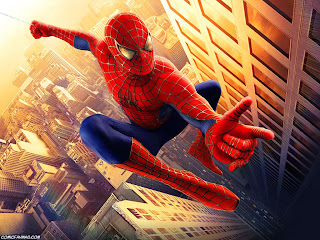What can we learn from these teachers?
In his video, TEDxDenverEd- Brian Crosby- Back to the Future, Brian Crosby introduced to us ways to teach a group of impoverished, non-english speaking students effectively. He talked about how he would use projects to relate students to people everywhere. He used a project on balloons to help students be hopeful. They created balloons and called them their "high hopes" because they represented what they hoped for themselves. They asked kids all around the world what their high hopes are and they tied their replies to a huge balloon that they released into the sky. They tied a GPS to the balloon as well so they could track it. After they released it, they spent the class tracking the baloon on Google Maps and writing about what they saw. This is such a unique twist on project-based learning!
Paul Andersen talks about belded learning in his video, Blended Learning Cycle. He describes blended learning as simply combining mobile, classroom, and online learning together. To effectively do blended learning, we must use Q.U.I.V.E.R.S.
Qu estion
I nvestigation
V ideo
E laboration
R eview
S ummary quiz
Blended learning is definitely something I will have to look more into and use in my classroom.
Mark Church talks about a group project he did in his class where students discussed what they saw in a video about early human beginnings. Students have to come up with a headline that summarizes what they learned. Students worked togther to come up with this phrase and write them down. The students then hung up their headlines and two weeks later looked at what they had written and see if anything had changed.
In his video, Super Digital Citizen, Sam Pane talks about what it means to be a responsible digital citizen. He opens
his lesson with a quote from Spider Man, "With great power comes great responsibility." He then asked his students to create a super hero that would save them from bad things on the internet, and them put them in a situation where the super hero saves the day and put it in comic strip form. The students create the super heros on a program on their own laptops. He then had students go on a "gallery walk" and evaluate their fellow students comics. This project helped students learn different ways to be a "super digital citizen" while still having fun.
In the video, Project Based Learning, we see a unique porject-based learning environment where history, english, and information proccessing is combined. The students involved in this use a lot of different kinds of technology to create their projects. To do this "super project-based class", classes were combined into one long class, which was great because it allowed more time for students to work and teachers to help students. The teachers said that the projects the students did in this class gave them a sense of ownership.
The last video, Roosevelt Elementary's PBL program, shows us how an elementary school incorporated project-based learning into their classes. These projects are intended to create real-world problem solving skills. This school allows students to make their own choices so that they learn through their own individual skills. The students use 21st century skills (presentations, group work, public speaking, etc.) to do their projects. The school also invites the community into the classroom to talk to the students about real life experiences. The student participation allows the students to better understand the material being taught. This type of PBL allows students to release their curiosity and apply it.
Subscribe to:
Post Comments (Atom)




Hey Marisa! I really enjoyed the Super Digital Citizen video. I think that us a great idea for project based learning. The students enjoyed making their super heroes and they learned how to be responsible and safe online. That is a big issue these days (at least in my mind it is) and it is great that teachers help students learn what is good and bad to put online.
ReplyDeleteGood job!
ReplyDelete